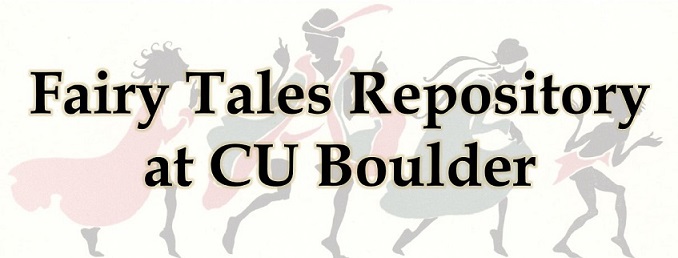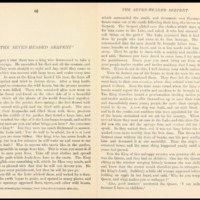"The Seven-Headed Serpent.” The Yellow Fairy Book, new impression, edited by Andrew Lang, London: Longmans, Green, and Co., 1906, pp. 60-63.
Item
Title
"The Seven-Headed Serpent.” The Yellow Fairy Book, new impression, edited by Andrew Lang, London: Longmans, Green, and Co., 1906, pp. 60-63.
Description
This tale is a new version of the old Greek story created by Andrew Lang in 1906. The plot also recalls the Greek myth of King Minos who sacrificed young men and women from Athens to the Minotaur he kept in his labyrinth. One black and white illustration depicts the serpent threatening a group of men on their knees.
Alternative Title
The Yellow Fairy Book
Creator
Andrew Lang
Andrew Lang
Spatial Coverage
London
Coverage
England
Publisher
Longmans, Green, And Co.
Date
1906
Temporal Coverage
1900-1909
Identifier
Dragon Slayers
Abstract
In this story, a king and his men set sail and discovered a bountiful island. On this island there was a large population of lions who attacked the king’s men. The men were able to defeat the lions but at a great cost and the majority of them perished. They set about exploring the island, stumbling upon three rivers flowing with silver, gold and pearls. After filling their knapsacks full of the precious commodities a nearby lake told them of the king serpent who ruled the land and how they must please him in order to be spared. The men placed their clothes down, so the serpent had a soft ground to move on. Upon seeing them, he orders that every year they must bring 12 maidens and 12 young men as a sacrifice. The king obliged and so did his people. The queen, in the meantime, childless, eats an apple that gives her a son and throws the rind out the window where a horse eats it and also gains a son. These two grew up together and decided to fight the serpent. They went to a nun who explained to them that they have to sneak into the serpent’s room, clog the bells with cotton that are suspended above the serpent’s bed, and only use the sword that hangs above the bed to slay the beast. The prince then slayed the beast and freed his country.
Source
Originally a Greek fairy tale, this version is from BernhardSchmidt’s “Die Siebenkopfige Schlange,” Griechische Märchen (Leipzig, 1877).
Relation
https://archive.org/details/yellowfairybook00lang02/page/n9/mode/2up
Site pages
This item was submitted on April 17, 2020 by [anonymous user] using the form “Submit a Fairy Tale” on the site “Fairy Tales Repository”: https://fairytales.suzannemagnanini.buffscreate.net/s/ft
Click here to view the collected data.
